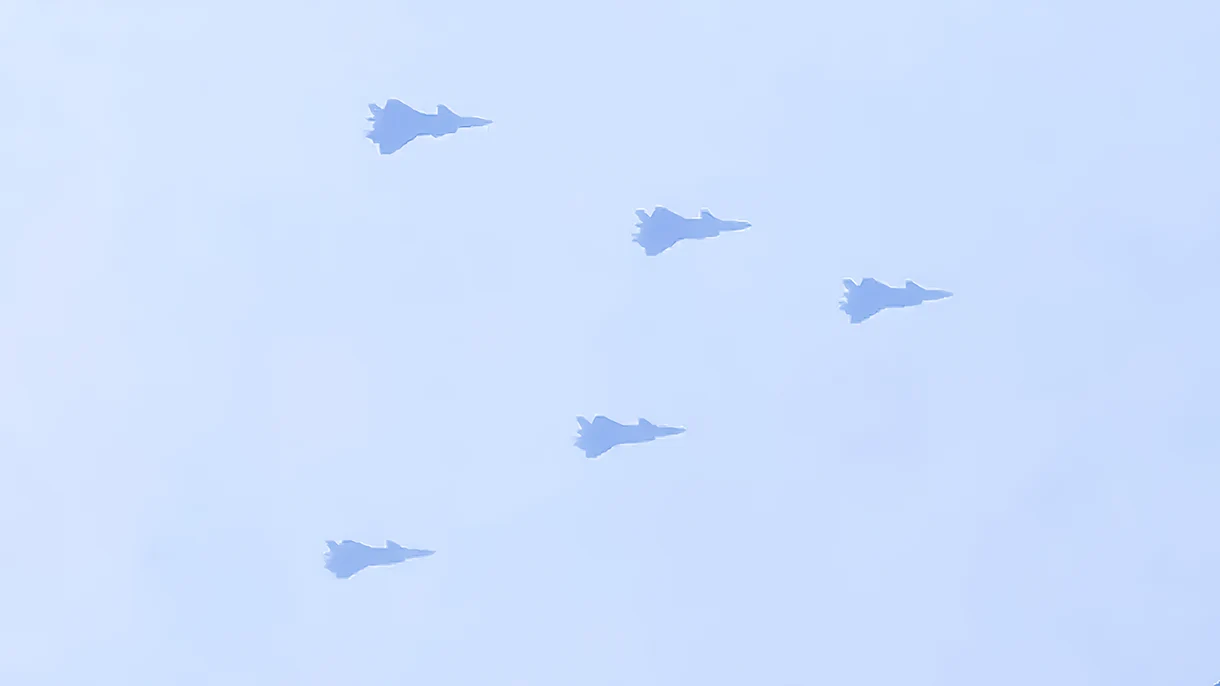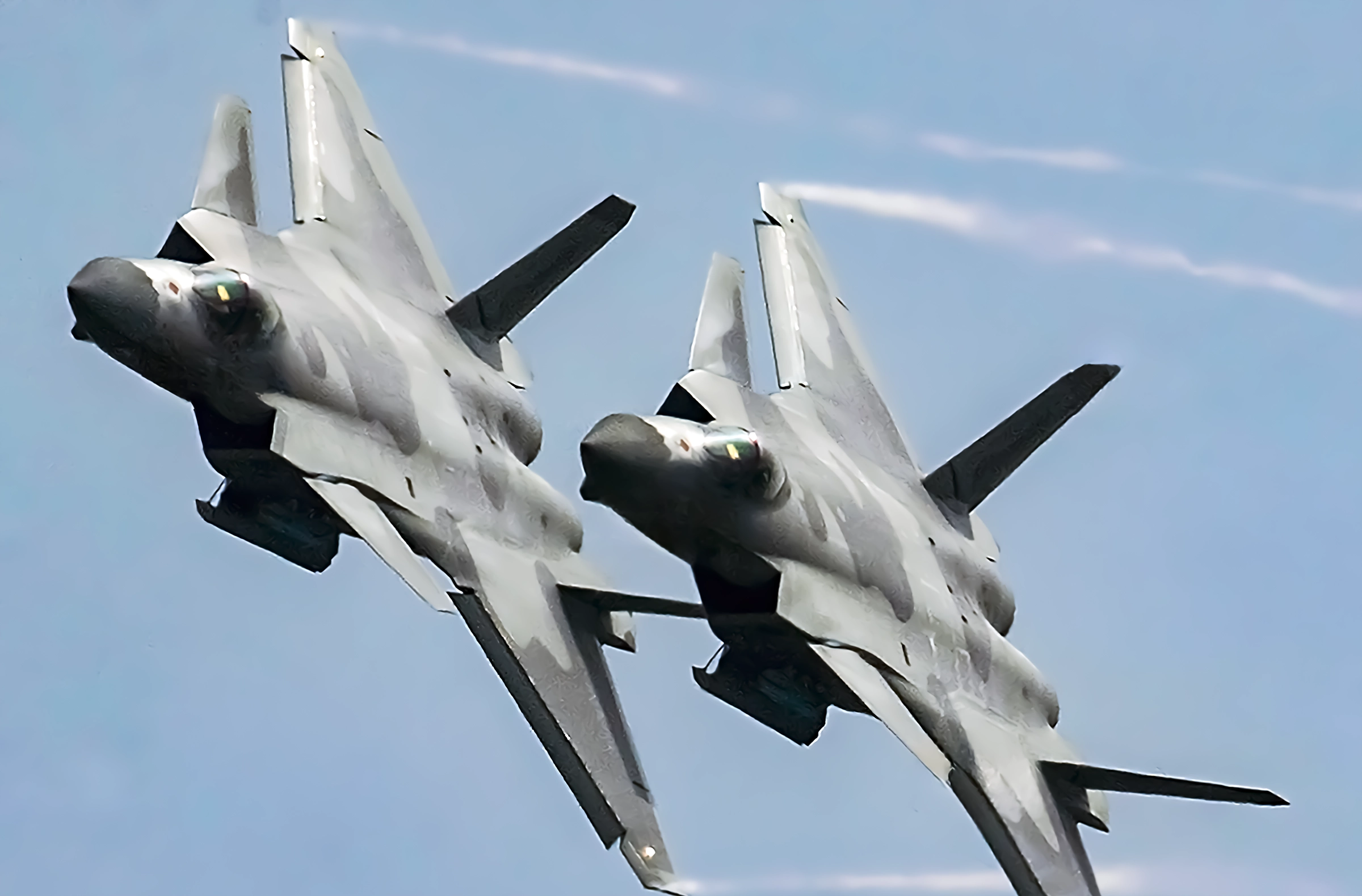The growth in capabilities of the Chinese PLA Air Force has prompted the United States to intensify the preparation of its F-16 Viper fighters alongside the advanced F-35 Lightning II.
Training operations: “Northern Lightning” and the combination of forces
On the scene of the “Northern Lightning” exercises in Wisconsin, the F-35B Joint Strike Fighters, standard bearers of the Marine Corps’ stealthy ability, and F-35A represented the combined force of the Air Force and National Guard aerial. Here, they acted as true leaders, leading larger squads into combat.
A new tactic was revealed in 2023: F-16 Vipers, while not stealthy, are shielded by more advanced F-35s. This tactical design allows F-16s to deploy their missile arsenal against simulated enemy forces, maximizing their impact.
 F-16 fighter
F-16 fighterIn these exercises, both T-38s, the shadowy F-117 Nighthawks, and some F-35s acted as adversaries. , adding further complexity to the maneuvers.
The strategy behind generational integration
Marine tactical thinking underscores that success in future conflicts, especially against powers like China, requires this generational integration. The possibility of a military confrontation between the two superpowers looms on the strategic horizon.
US Marine Captain “Melon” Streicher emphasized the crucial integration of fourth and fifth-generation jets as a cornerstone of his training. Despite the stealth of the F-35, its missile capability remains limited.
Each F-35 variant is designed to internally house up to four AIM-120 AMRAAM missiles or a combination of these with air-to-surface weaponry. While it can carry more weaponry externally, this compromises its stealth ability.
F-16V and its weapons potential
In contrast, the F-16Vs can be equipped with AIM-9X Sidewinder missiles, plus an arsenal that includes the AGM-84 Harpoon, AGM-88 HARM, AGM-154 JSOW, and SLAM-ER. The SLAM-ER stands out for its precision in long-distance attacks, reaching up to 170 miles.
Streicher noted that, unlike the F-35s, “the F-16s have six missiles each. Our mission is to ensure their deployment and survival in combat.”
The F-35, with its ability to coordinate strategically, bridges the gap between stealth and non-stealth aircraft in operations, including with allies and international partners.
Facing China: Taiwan’s role and the F-16V dilemma

F-35 fighter
In theory, if a conflict with China breaks out over Taiwan, US F-35s could ally with Taiwanese F-16Vs against the People’s Liberation Army Air Force. It all depends on whether the United States or allies like Japan and South Korea intervene in a war against China.
Taiwan’s F-16Vs will have to fend for themselves against the elusive J-20s if they decide not to engage Beijing directly.
The F-35 Lightning II is currently the most coveted stealth fighter aircraft globally for its combination of speed, agility, and advanced capabilities. The F-35s, when deployed with other aircraft, empower and protect the latter. A recent military exercise revealed its potential: eight enemy casualties without suffering any damage.
The F-35: The Pioneer of Stealth and Its Influence
 AIM-120 AMRAAM missile: A legend of air combat
AIM-120 AMRAAM missile: A legend of air combatIn modern combat choreography, whoever gets an initial offensive usually owns the battlefield. This is where the F-35s prove their worth. They are not only fighting machines but enablers for other fighters loaded with missiles but devoid of stealth.
Thanks to their advanced stealth technology, the F-35s allow these fighters to unleash their arsenal undetected, empowering the entire military operation.
Faced with the growing threat from the PLA Air Force, Taiwan is confident that the F-16 Vipers, which it acquired from the US, will be its main defensive barrier against the J-20s.
The Rise of the J-20: An Air Power
The J-20, third in the generation of stealth fighters, poses an imposing threat. Taiwan, in response, embarks on a massive transformation. It’s upgrading a fleet of aging F-16A/Bs to the most advanced technology.
With an order for 66 modern F-16V block 70s, Taiwan reflects its commitment to strengthening its air defenses. Like the US F-35, the J-20 stands out for its advanced radar technology and integrated electronics.
Its impressively ranged radar system and long-range missiles solidify its status in the air theater of operations.
F-16V: Taiwan’s Response
 F-16V
F-16VCompared to its predecessors, the F-16V leads the way in spotting the elusive J-20. This is due to its modern APG-83 AESA radar and a suite of contemporary avionics.
The US’s choice to equip Taiwan with these fighters generated strong reactions from China. However, we cannot ignore the constant evolution of the People’s Liberation Army Air Force (PLAAF).
Over the past two decades, it has bolstered its fleet with J-10s, J-11s and J-16s, and rumors suggest it already has some 200 J-20 fighters strategically deployed across all of its theater commands.
The Challenge for Taiwan

Taiwan faces a difficult scenario with an air force superior in numbers and technology. The presence of the J-20s could increase their perception of vulnerability, given the stealth capabilities of these fighters.
According to Drew Thompson, a military analyst, in his War on the Rocks article, Taiwan has devised an innovative strategy to counter China. In a shrewd move, it seeks to deploy integrated air defense systems to protect bases and vital infrastructure.
These strategically placed systems are intended to strengthen Taiwan’s defensive capability against the growing threat.
Taiwan Defense: Are the F-16Vs Ready for the J-20 Advance?
Contrary to conventional wisdom, air superiority may not be the central axis of the Taiwanese defense against a possible Chinese invasion. Despite its ability to launch anti-ship missiles, the number of aircraft that could weather the first Chinese onslaught would be limited. Taiwan’s air bases would be in the PLA‘s crosshairs from the start.
Therefore, the role of Taiwanese fighters is seen more as a deterrent during peacetime than a key asset in the theater of war. However, China’s ongoing challenges in the Taiwan Air Defense Identification Zone [ADIZ] suggest that the J-20 is on the prowl for Taiwanese F-16Vs.
Both fighters could meet forces in this hostile environment, with the J-20 trying to prove its supremacy through daring raids and the F-16Vs zealously guarding their territory.
Air strategies: The conjunction between 4th and 5th generation fighters
An anonymous military expert highlighted the importance of integrating 5th generation fighters, such as the F-35, with 4th generation ones, such as the F–16. This complementary integration provides tactical advantages, a strategy the PLA is also adopting, aligning its J-20s with 4th and 4.5th generation forces, including the J-16 and J-10C.
The military landscape makes it clear that Taiwan does not have fifth-generation fighters and has a limited number of fourth-generation fighters. This reality highlights the limitations of its aerial capabilities.
The analysis goes further, pointing out that the Taiwanese defensive infrastructure is at a disadvantage compared to that of the PLA, especially if we consider advanced air systems and ground forces.
J-20: The dragon that threatens the skies of Taiwan

Chinese pilots have claimed they have managed to penetrate Taiwanese airspace undetected by both flying fighters and ground-based radar, presenting the J-20 as the apex of stealth technology.
This allegation brings to the fore the direct confrontation between the F-16V and the J-20 and other PLAAF fighters, evidencing the possible supremacy of the J-20 on the airfield.
A second expert, when asked about the performance of the F-16V against the J-20, suggested that the real challenge lies not in the comparison of capabilities but in the operability and resistance of the Taiwanese air force, especially considering the superiority of the PLA in areas such as Airborne Early Warning and Control [AEW&C], Electronic Warfare [EW], and weaponry.
Taiwan without an F-35: A defense without a quarterback

F-16 fighters
A major deficiency in the Taiwanese defense is the lack of F-35 fighters, which deprives them of a coordinating element in the launch of missiles by the F-16 Vipers. Comparatively, the United States does have this capability, leaving Taiwan in a more vulnerable position.
This disparity reflects Taiwan’s need to diversify and strengthen its air arsenal in order to establish a stronger defense against potential threats.
In conclusion, the potential confrontation between the J-20 and the F-16V over Taiwan transcends the mere comparison of technical capabilities and plunges into a game of strategies, preparations, and operational capabilities.


